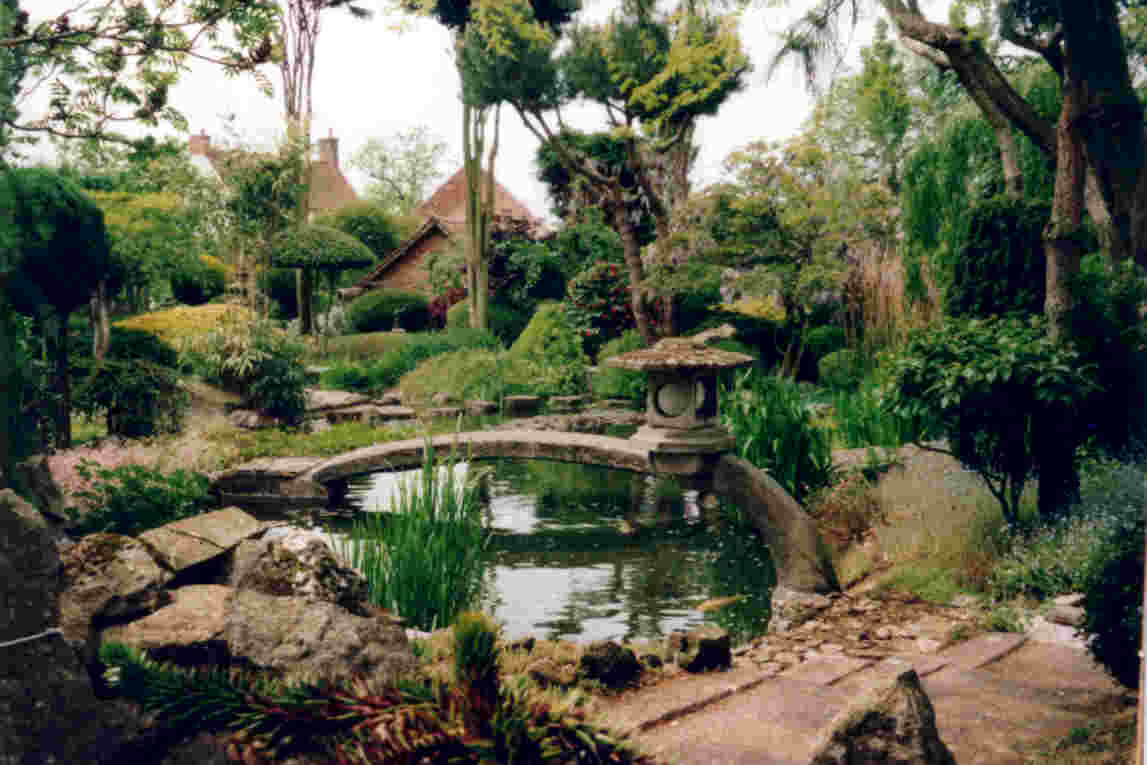Architecture
Japanese architecture has as long a history as any other aspect of Japanese culture. Originally heavily influenced by Chinese architecture, it also develops many differences and aspects which are indigenous to Japan. Examples of traditional architecture are seen at Temples, Shinto shrines and castles in Kyoto, and Nara. Some of these buildings are constructed with traditional gardens, which are influenced from Zen ideas.
Some modern architects, such as Yoshio Taniguchi and Tadao Ando are known for their amalgamation of Japanese traditional and Western architectural influences.
Gardens
Also known as nihon teien, the Japanese gardens can be found at private homes, in neighbourhood or city parks, and at historical landmarks such as Buddhist temples, Shinto shrines and old castles.
Some of the Japanese gardens most famous in the West, and within Japan as well, are dry gardens or rock gardens, karesansui. The tradition of the tea masters has produced highly refined Japanese gardens of quite another style, evoking rural simplicity. In Japanese culture, garden-making is a high art, intimately related to the linked arts of calligraphy and ink painting. Since the end of the 19th century, Japanese gardens have also been adapted to Western settings.
Japanese gardens were developed under the influences of the distinctive and stylized Chinese gardens. One of the great interests for the historical development of the Japanese garden, bonseki, bonsai and related arts is the Zen monk Kokan Shiren and his rhymeprose essay Rhymeprose on a Miniature Landscape Garden.
The tradition of Japanese gardening was historically passed down from sensei to apprentice. In recent decades this has been supplemented by various trade schools.
Traditional Clothing
Traditional Japanese clothing distinguishes Japan from all other countries around the world. The Japanese word kimono means "something one wears" and they are the traditional garments of Japan. Originally, the word kimono was used for all types of clothing, but eventually, it came to refer specifically to the full-length garment also known as the naga-gi, meaning "long-wear", that is still worn today on special occasions by women, men, and children. Kimono in this meaning plus all other items of traditional Japanese clothing is known collectively as wafuku which means "Japanese clothes" as opposed to yofuku (Western-style clothing). Kimonos come in a variety of colours, styles, and sizes. Men mainly wear darker or more muted colours, while women tend to wear brighter colours and pastels, and, especially for younger women, often with complicated abstract or floral patterns.
The kimono of a woman who is married (Tomesode) differs from the kimono of a woman who is not married (Furisode). The Tomesode sets itself apart because the patterns do not go above the waistline. The Furisode can be recognized by its extremely long sleeves spanning anywhere from 39 to 42 inches, it is also the most formal kimono an unwed woman wears. The Furisode advertises that a woman is not only of age but also single.
The style of kimono also changes with the season, in spring kimonos are vibrantly colored with springtime flowers embroidered on them. In the fall, kimono colours are not as bright, with fall patterns. Flannel kimonos are ideal for winter; they are a heavier material to help keep you warm.
Sources:
http://lh3.ggpht.com/_m0AY-010Fg0/SgXySDUR2zI/AAAAAAAAAbY/fQ1zCJS0FSM/Japanese-architecture.jpg
http://www.businessballs.com/images/garden_pics/japanese_garden5.jpg
Bramble, S. (2005). Culture Shock! A Survival Guide to Customs and Etiquette. Singapore : Marshall Cavendish



No comments:
Post a Comment